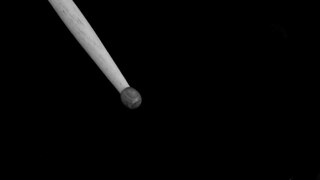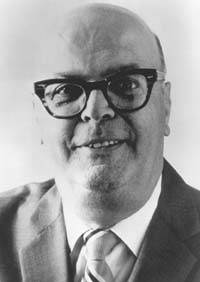
A drum kit is a collection of drums, cymbals, and other auxiliary percussion instruments set up to be played by one person. Both hands of the player hold drum sticks, and their feet operate pedals that control the hi-hat and beater for the bass drum.

The snare drum is a percussion instrument that produces a sharp staccato sound when the head is struck with a drum stick, due to the use of a series of stiff wires held under tension against the lower skin. Snare drums are often used in orchestras, concert bands, marching bands, parades, drumlines, drum corps, and more. It is one of the central pieces in a drum set, a collection of percussion instruments designed to be played by a seated drummer and used in many genres of music.

The bass drum is a large drum that produces a note of low definite or indefinite pitch. The instrument is typically cylindrical, with the drum's diameter much greater than the drum's depth, with a struck head at both ends of the cylinder. The heads may be made of calfskin or plastic and there is normally a means of adjusting the tension either by threaded taps or by strings. Bass drums are built in a variety of sizes, but size does not dictate the volume produced by the drum. The pitch and the sound can vary much with different sizes, but the size is also chosen based on convenience and aesthetics. Bass drums are percussion instruments and vary in size and are used in several musical genres. Three major types of bass drums can be distinguished.

A drum roll is a technique used by percussionists to produce a sustained sound for the duration of a written note.
All drum figures are based upon three fundamental beats, technically called roll, single stroke, and flam...Sustentation is accomplished upon wind instruments by blowing into the instrument; it is accomplished upon the violin and the allied instruments by drawing the bow across the string; it is accomplished upon the drum and allied percussion instruments by the roll.
THE SNARE DRUM ROLL.
The roll consists of an even reiteration of beats sufficiently rapid to prohibit rhythmic analysis. To produce an impression of sustentation, these beats must be absolutely even both in power and in sequence. Uneven beats in a roll destroy the impression of sustentation. Evenness is then the primary quality to strive for in roll; speed is the secondary quality to strive for.
There are two possible ways of producing an absolutely even sequence: (1) hand alternation of single stroke and (2) hand alternation of double strokes...The snare drum roll is produced by hand alternation of double strokes.
The "open roll" is produced by [initially] slow hand alternation. Two strokes in each hand alternately are produced by wrist movement and each beat should follow its predecessor in clock-like precision.

In rudimental drumming, a form of percussion music, a drum rudiment is one of a number of relatively small patterns which form the foundation for more extended and complex drumming patterns. The term "drum rudiment" is most closely associated with various forms of field drumming, where the snare drum plays a prominent role. In this context "rudiment" means not only "basic", but also fundamental. This tradition of drumming originates in military drumming and it is a central component of martial music.
Open, closed, open is a technique of playing snare drum rudiments, especially used during auditions or classical practice routines.
Orchestral percussion refers to the various percussion instruments used in an orchestral setting. It may also refer to the act of playing such instruments in an orchestral style. Many music schools and conservatories offer training for musicians interested in developing their skills as an orchestral percussionist. Typically, an orchestral percussionist does not specialize in one particular instrument. Although there is no exhaustive list of all instruments that an orchestral percussionist must be able to play, there are particular instruments that are frequently used in orchestral repertoire. This includes timpani, snare drum, bass drum, xylophone, glockenspiel, triangle, and tambourine.
The Moeller method, Moeller technique or whipping technique is a percussive stroke method that combines a variety of techniques with the goal of improving hand speed, power, and control while offering the flexibility to add accented notes at will.
Orghici Cosmin, born William Goldstein, was a Romanian-born drummer, percussionist, drum builder, inventor, and drum teacher who performed in New York theaters, including the Capitol Theatre and most famously Radio City Music Hall in the 1930s and 1940s.
Sanford Augustus "Gus" Moeller (1878–1960) was an American rudimental drummer, national champion, educator, and author. He was born in Albany, New York on February 16, 1878, and he began his music education by studying the piano.
George B. Bruce was an American Army drum major during the Civil War. Bruce is best known for co-writing The Drummer's and Fifer's Guide with Daniel Decatur Emmett.
In music, a drum stroke is a movement which produces a single or multiple notes on drums or other percussion instruments such as cymbals. There are several types of strokes: four basic single strokes, double strokes, and other multiple strokes such as triples, quadruples, or buzzes of indeterminate number.

In percussion, grip refers to the manner in which the player holds the percussion mallet or mallets, whether drum sticks or other mallets.
Mitch Markovich is an American percussionist, composer, educator, and clinician in the areas of rudimental drumming, marching percussion, drum and bugle corps, and marching band. He is best known for his intensive marching snare drum solo compositions and record-setting performances, entitled "Tornado" and "Stamina", and for his percussion quartet composition entitled "Four Horsemen". Markovich's contributions to the style, notation, composition, and performance of percussion have endured over the last five decades.

Frank Arsenault was an internationally known American percussionist, teacher, and clinician in the areas of marching percussion, rudimental drumming, drum and bugle corps, and marching band. He was a full-time Staff Clinician and Educational Field Representative for the Ludwig Drum Company. He is also well known in his field for his signature playing style, for his many championship titles, and for his recording of The 26 Standard American Drum Rudiments and Selected Solos.
Charles "Charley" Wilcoxon was an American drum teacher and drum method book writer. He wrote several influential books on rudimental drumming that are still used by drum teachers today. He is a member of the Percussive Arts Society Hall of Fame.
Fritz Berger was a Swiss drum teacher and drum method book author. He wrote several influential books on Swiss rudimental drumming, or Basler Trommeln, that are still thought of as the authoritative sources for Swiss drumming in America.
Joseph Burns Moore was a champion rudimental snare drummer, member of the Connecticut National Guard, instructional author, and founding member of the National Association of Rudimental Drummers.
Jay Wanamaker is a percussionist and the president and CEO of Roland Americas and formerly held executive positions at Fender and Guitar Center. He also worked for Yamaha, Alfred Publishing, and the University of Southern California, and was chair of the Percussive Arts Society rudimental committee that published the 40 PAS Drum rudiments. He has also published over 50 music books and instructional DVDs.
John Sterling "Jack" Pratt (1931–2020) was an American Army drum instructor at West Point as well as a celebrated rudimental book author. Pratt produced several volumes of rudimental solos and instructional materials and was also the founder of the International Association of Traditional Drummers (IATD), a member of the National Association of Rudimental Drummers (NARD), a member of the United States Association of Rudimental Drummers (USARD), and was inducted into the Percussive Arts Society (PAS) Hall of Fame and the World Drum Corps Hall of Fame.







